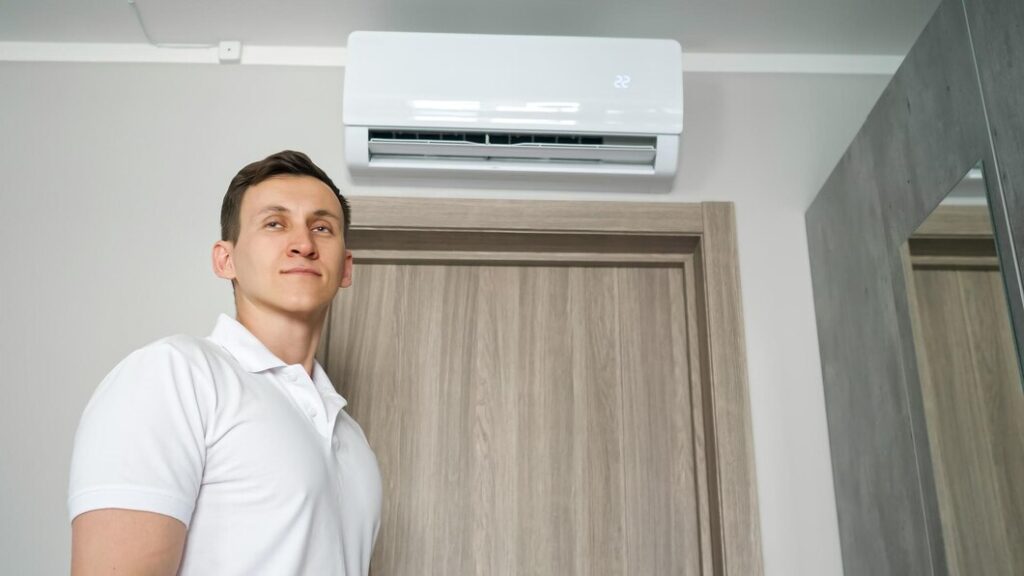Ductless Mini Split Systems for Efficient Heating
As homes and buildings evolve, so do the heating solutions available to them. Traditional heating systems are no longer the only choice for keeping spaces warm and comfortable. Increasingly, homeowners are turning to ductless mini split systems for efficient and adaptable heating. These systems provide an innovative alternative to conventional HVAC systems, allowing users to efficiently manage their indoor climate without extensive ductwork.
Understanding the Basics of Ductless Mini Split Systems
Ductless mini split systems are gaining popularity as an alternative to traditional HVAC systems. They consist of two main components: an indoor air-handling unit and an outdoor compressor/condenser. A small conduit, housing the power cable, refrigerant tubing, suction tubing, and a condensate drain, connects these components. This setup provides the flexibility to install the indoor unit in various zones within the living space, allowing for individual room temperature control.
Unlike conventional HVAC systems that require extensive ductwork, ductless mini splits operate without ducts, which makes them ideal for homes where installing ductwork is impractical. These systems use a heat pump to transfer heat between indoors and outdoors, making them efficient for both heating and cooling.
Choosing a ductless mini split system comes with several benefits:
1. Zoning Capability: Users can control temperatures in different rooms or zones, enhancing comfort and efficiency.
2. Savings on Energy: With no energy loss through ducts, these units are often more efficient.
3. Ease of Installation: The absence of ductwork streamlines the installation process, reducing the time and complexity involved.
For homeowners seeking efficient heating and cooling solutions, ductless mini split systems present a versatile and energy-efficient option.
Energy Efficiency and Environmental Impact
Ductless systems are designed to maximize energy efficiency, which translates to lower utility bills and reduced environmental impact. By utilizing inverter-driven compressors, these systems can adjust the speed of their compressor to maintain the desired temperature precisely. This minimizes energy waste compared to traditional HVAC systems that frequently start and stop, causing energy spikes.
The environmental benefits of ductless systems are significant. They require less energy to operate, thereby decreasing fossil fuel consumption and reducing carbon emissions. Installing a ductless system can be a step toward a more sustainable lifestyle while maintaining a comfortable indoor climate.
When compared to other heating options, ductless mini splits stand out due to their efficiency. Traditional HVAC systems can lose a substantial amount of energy through ductwork inefficiencies. In contrast, ductless systems eliminate these losses and offer better performance. This can result in noticeable savings on energy bills and a reduced carbon footprint.
Opting for ductless technology is not just beneficial for individual households; it contributes to broader environmental conservation efforts. By integrating such systems into residential and commercial settings, the overall demand for energy decreases, promoting a healthier planet for future generations.
Installation Process and Considerations
The installation process for ductless mini split systems is less invasive compared to traditional HVAC systems, primarily due to the absence of ductwork. Here’s a step-by-step overview of how installations typically proceed:
1. Site Evaluation: An initial assessment is conducted to determine where the indoor and outdoor units will be placed.
2. Mounting the Indoor Unit: The indoor component is mounted to a wall in the selected zone. The precise location should be accessible and avoid direct sunlight.
3. Installing the Outdoor Unit: The outdoor unit is set up on a pad or mounted on a bracket adjacent to the building.
4. Connecting Components: A conduit is drilled through the wall to connect the indoor and outdoor units. It carries refrigerant lines, power cables, and drainage.
5. Powering the System: The electrical connections are made, ensuring that the system is safe and meets local electrical codes.
6. Testing and Calibration: Finally, the system is tested to ensure it’s functioning correctly and efficiently.
When considering installation, factors like the building’s layout, aesthetic preferences, and local climate are crucial. Enlisting our professionals ensures proper sizing and placement, which are essential for optimal efficiency. Our HVAC contractors possess the expertise necessary to navigate these factors successfully.
Maintenance and Long-Term Performance
Routine maintenance plays a vital role in the longevity and performance of ductless mini split systems. Adhering to a regular maintenance schedule can prevent minor issues from developing into costly repairs. Here are some recommended practices:
- Regular Cleaning: Clean the filters to maintain airflow and efficiency. Dirty filters can hinder performance and elevate energy consumption.
- Inspect Refrigerant Lines: Periodically check for leaks and ensure that refrigerant levels are adequate. Leaks can significantly impact the system’s efficiency.
- Clear Debris: Keep the outdoor unit free of leaves, dirt, and other debris to ensure unobstructed airflow.
Regular checks by our technicians are essential for ensuring that all components function properly. This not only extends the system’s lifespan but also helps maintain indoor air quality and energy efficiency. Our experts have the knowledge required to perform these checks effectively and can advise on further actions if needed.
Conclusion
Ductless mini split systems represent a forward-thinking choice for those seeking efficient, flexible heating solutions. With the ability to provide zoned climate control, these systems cater to individualized comfort needs while promoting energy conservation. Their streamlined installation process offers a significant advantage over traditional systems, particularly in homes without existing ductwork.
Regular maintenance further elevates the performance and reliability of ductless systems. By following recommended practices and ensuring professional inspections, homeowners can extend their system’s lifespan, reduce utility costs, and uphold indoor air quality. The benefits of choosing such an innovative heating solution are abundant.
At Infinity Texas Air, we specialize in installing and maintaining ductless mini split in Rockwall, TX. Our team is equipped with the knowledge and tools necessary to provide seamless service. Whether you’re looking to install a new system or maintain an existing one, trust our experts to deliver unparalleled support and expertise. Contact us today to explore how we can enhance your home’s comfort and efficiency.




